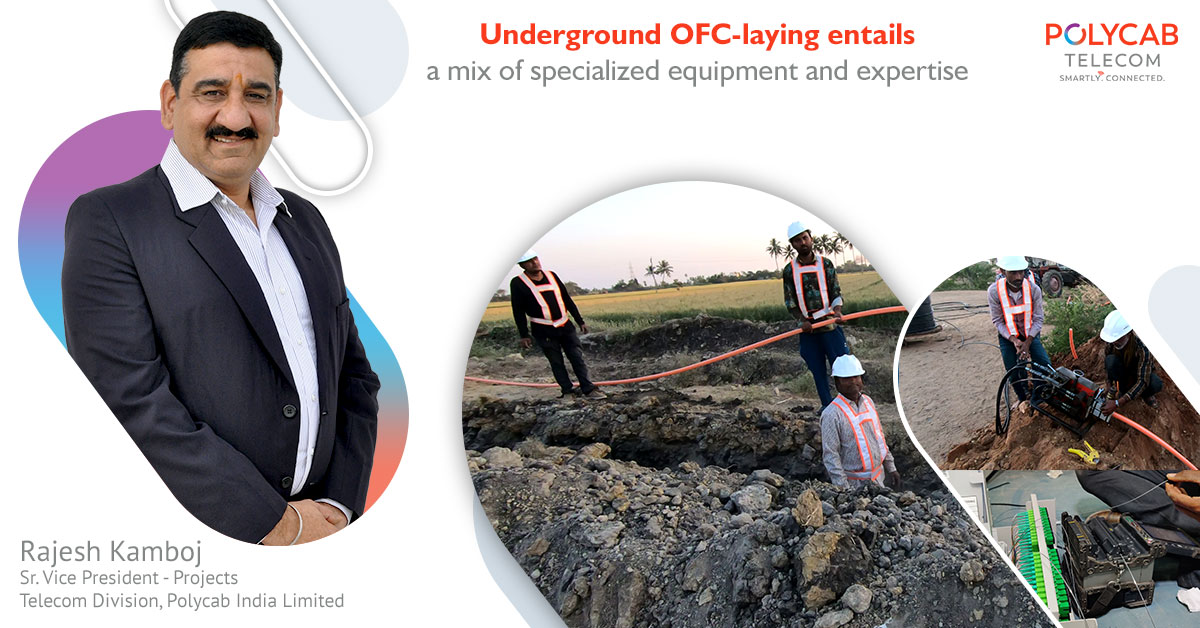Fiber-optic transmission has surely transformed the telecommunication industry. Optical Fiber Cables (OFCs) have emerged as a highly effective physical infrastructure of new-age networks, in response to the rising demands for higher bandwidth and faster data-speed for a variety of industrial and residential purposes. The two most common outdoor OFC-installations are Pole-line Aerial Installation and Underground Cable Installation. Both the processes have their own sets of advantages and disadvantages.
In Underground Cable Installation, OFCs can be laid directly underground or placed into a buried duct. Apt for long cross-country installations, direct burial installations involve blowing in of cables or their burial in a trench. Steel Armoured Outdoor OFCs are normally used for this kind of installation. But Underground Duct Installation is the preferred choice in urban areas. OFCs without armours can be laid which is why installation becomes a little bit easy. Since the cables are buried underground, they generally don’t get affected by harsh or adverse weather-conditions. Addition in cabling can be done easily without the need to dig. Before embarking on any Underground Cable Installation project, RoW-permissions are necessary. Identification of existing underground utilities like buried cables, pipes etc., inspection of the soil-condition to assess the installation-depth and regular availability of blowing-equipment are essential. After opting for the type of OFCs vis-à-vis a specific Underground Cable Installation, cables’ specified maximum pulling tension, minimum bending radius and maximum crush-load must be adhered to in the process. Detergents or petroleum-based compounds mustn’t be used as cable-lubricants. Since the cables are buried underground, space-crunch is not an issue, as even less space is enough to place them and get the connection. But Underground Cable Installation carries with it significantly higher initial cost and complication than the aerial installations. Underground OFCs also carry the risk of being damaged during any future excavations.
Polycab Telecom, a division of Polycab India Ltd., is best-known for the delivery of major telecom infrastructure projects, with capabilities to roll out large telecom Infrastructure projects for both, Broadband and Wireless Networks. We’ve been regularly delivering our services for BharatNet, world’s largest rural broadband project, wherein we achieved back-to-back timely completion of projects in Gujarat and Bihar, doing mostly Underground Cable Installation. Working currently for another project under BharatNet Phase-II in Tamil Nadu, we’re in the process to lay OFCs for around 16,500 kms, with almost 85% being aerial and the rest underground, as mandated by the TANFINET, a Special Purpose Vehicle (SPV), instituted by the state.






